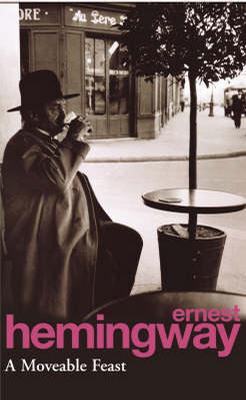-

春潮 老人与海
《春潮*老人与海》讲述了:美国青年作家斯克利普斯·奥尼尔的妻子女儿相继出走,他本人雪夜离家去找工作,在小饭馆中邂逅中年女招待、爱好文学的英国人黛安娜,两人一拍即合,闪电结婚,而他也因此在城中水泵厂当上了记件工。不料小饭馆里接替黛安娜的女招待曼迪一肚子文坛掌故,且能说会道,迷倒了斯克利普斯。与斯克利普斯同厂的工人瑜珈·约翰逊在参加第一次世界大战期间,曾在巴黎有过一段“艳遇”,结果中了“仙人跳”,从此不想找女人。然而,一个一丝不挂的印第安女人闯进了小饭馆,被人撵走,在街头茫然徘徊的瑜珈竟跟随着她,把衣服一件件脱掉,和她并肩走入夜色中……冬春之交,密执安州的北国山城发生了一系列奇事,构成了海明威早期中篇小说《春潮》妙趣横生的核心情节。 《老人与海》讲述了老渔夫与大鱼苦斗的故事,主题深刻,为海明威赢得了普利策奖和诺贝尔文学奖,在我国早已受到广泛欢迎。 -

The Sun Also Rises
The quintessential novel of the Lost Generation, The Sun Also Rises is one of Ernest Hemingway's masterpieces and a classic example of his spare but powerful writing style. A poignant look at the disillusionment and angst of the post-World War I generation, the novel introduces two of Hemingway's most unforgettable characters: Jake Barnes and Lady Brett Ashley. The story follows the flamboyant Brett and the hapless Jake as they journey from the wild nightlife of 1920s Paris to the brutal bullfighting rings of Spain with a motley group of expatriates. It is an age of moral bankruptcy, spiritual dissolution, unrealized love, and vanishing illusions. First published in 1926, The Sun Also Rises helped to establish Hemingway as one of the greatest writers of the twentieth century -

伊甸园
美国青年作家戴维在20年代中和妻子凯瑟琳从巴黎到法国南部地中海地中海海滨度蜜月,沉 醉在浪漫的性爱生活中。戴维想继续写作,妻子却只想及时行乐,找发型师把头发铰短,甚 至在结织外国姑娘玛丽塔后,怂恿丈夫爱她,三人投入了危险的性爱游戏中。但“好景”不 长,因玛丽塔支持戴维写作,凯瑟琳由妒生恨,把他的手稿付之一炬后留信出走。戴维在玛 丽塔的呵护下,文思泉涌,把最喜爱的一个短篇一字不错的重写出来,又回到了“伊甸园” 中。这是海明威1961年自杀后出版的遗作,虽然写于晚年身体日渐衰退的时期,但全书焕 发着如火如茶的生命力与爱情,是一部难得的青春小说。 -

The Sun Also Rises
The Sun Also Rises was Ernest Hemingway's first big novel, and immediately established Hemingway as one of the great prose stylists, and one of the preeminent writers of his time. It is also the book that encapsulates the angst of the post-World War I generation, known as the Lost Generation. This poignantly beautiful story of a group of American and English expatriates in Paris on an excursion to Pamplona represents a dramatic step forward for Hemingway's evolving style. Featuring Left Bank Paris in the 1920s and brutally realistic descriptions of bullfighting in Spain, the story is about the flamboyant Lady Brett Ashley and the hapless Jake Barnes. In an age of moral bankruptcy, spiritual dissolution, unrealized love, and vanishing illusions, this is the Lost Generation. -

丧钟为谁而鸣
《海明威小说:丧钟为谁而鸣》是海明威的主要作品之一。美国青年罗伯特•乔丹志愿参加西班牙政府军,在敌后搞爆破活动。为配合反攻,他奉命和地方游击队联系,完成炸桥任务。在纷飞的战火中,他与被敌人糟蹋过的小姑娘玛丽亚堕入爱河,藉此抹平了玛丽亚心灵的创伤。在三天的时间里,罗伯特历经爱情与职责的冲突和生与死的考验,人性不断升华。在炸桥的撤退途中,他把生的希望让给别人,自己却被炮弹炸断了大腿,独自留下阻击敌人,最终为西班牙人民献出了年轻的生命。《海明威小说:丧钟为谁而鸣》以其深沉的人道主力量感动了一代又一代人。 -

A Moveable Feast
"You belong to me and all Paris belongs to me and I belong to this notebook and this pencil." Begun in the autumn of 1957 and published posthumously in 1964, Ernest Hemingway's A Moveable Feast captures what it meant to be young and poor and writing in Paris during the 1920s. A correspondent for the Toronto Star, Hemingway arrived in Paris in 1921, three years after the trauma of the Great War and at the beginning of the transformation of Europe's cultural landscape: Braque and Picasso were experimenting with cubist forms; James Joyce, long living in self-imposed exile from his native Dublin, had just completed Ulysses; Gertude Stein held court at 27 rue de Fleurus, and deemed young Ernest a member of rue génération perdue; and T. S. Eliot was a bank clerk in London. It was during these years that the as-of-yet unpublished young writer gathered the material for his first novel, The Sun Also Rises, and the subsequent masterpieces that followed. Among these small, reflective sketches are unforgettable encounters with the members of Hemingway's slightly rag-tag circle of artists and writers, some also fated to achieve fame and glory, others to fall into obscurity. Here, too, is an evocation of the Paris that Hemingway knew as a young man -- a map drawn in his distinct prose of the streets and cafés and bookshops that comprised the city in which he, as a young writer, sometimes struggling against the cold and hunger of near poverty, honed the skills of his craft. A Moveable Feast is at once an elegy to the remarkable group of expatriates that gathered in Paris during the twenties and a testament to the risks and rewards of the writerly life.